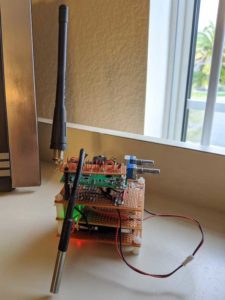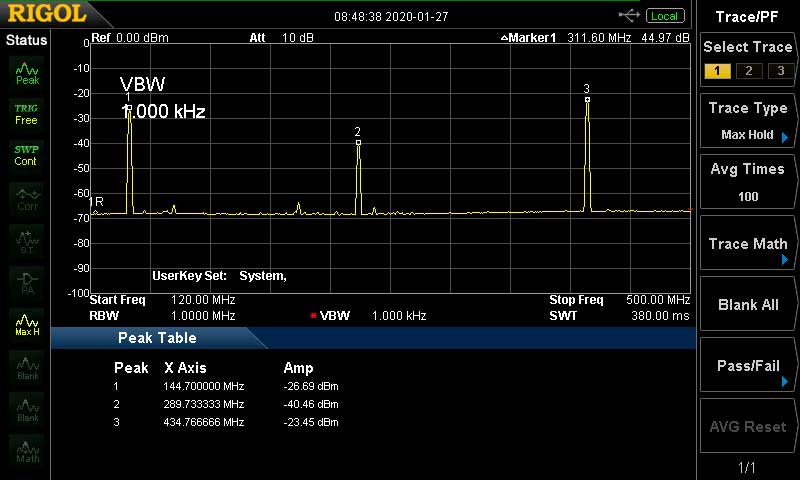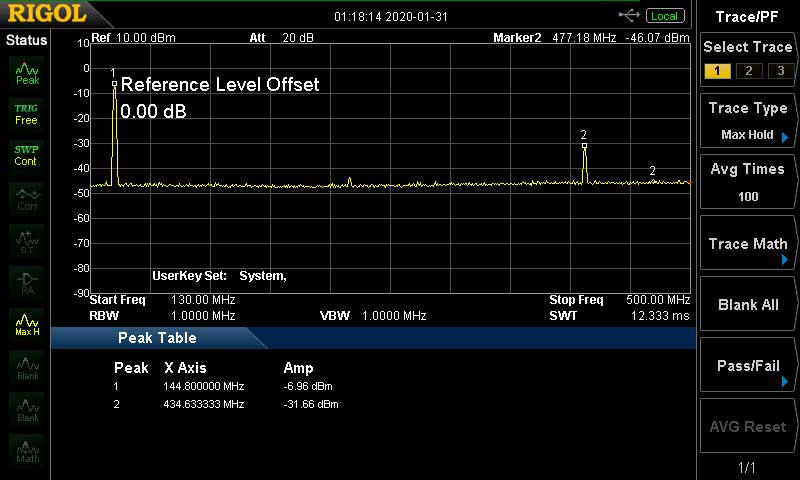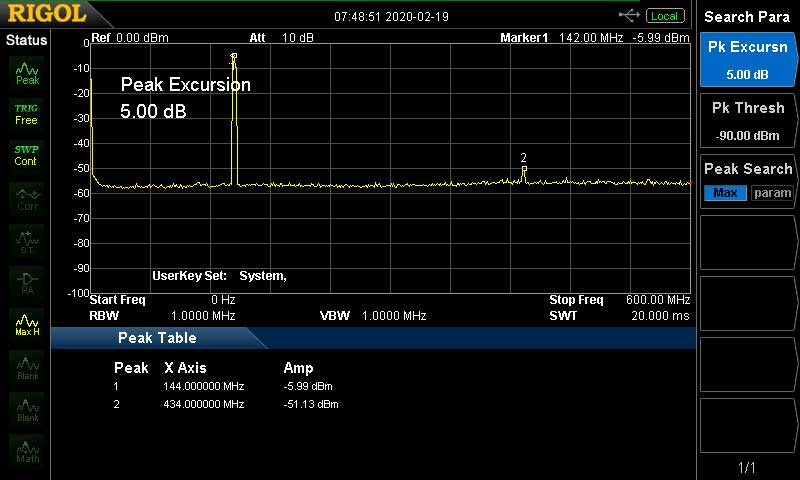Flying Squirrel #5 – Getting ready for a March 2020 launch.

Its been a busy season around the Squirrel Engineering labs. But silently in the background Flying Squirrel #5 (FS5) has been taking shape.
Based on a whole new radio telemetry design, FS5 is using APRS to relay data back to the ground. This has some major advantages over the HF signals sent by prior flying squirrel missions and some disadvantages.
APRS – Automatic Packet Reporting System is a technology to send radio telemetry via ham radio The telemetry on APRS is most often used to exchange a position along with other data. For example, weather data, or vehicle type, speed and direction.
In the US, APRS is most used, on the ham 2-meter band (144.390 Mhz). The biggest advantage of APRS is a large number of ground stations listening to this frequency 24/7. If you send an APRS packet within range of another APRS station it is likely to be heard and relayed up through a network and eventually to the Internet via an IGate (Internet Gateway). Once up on “the net” various websites will show the position and telemetry on a map. Unlike prior missions, there is no need to chase the balloon closely to receive the telemetry and relay it to the internet. The most popular site for displaying APRS data is APRS.fi (http://aprs.fi). A balloon specific tracking site at https://tracker.habhub.org/ will also pick up balloons, via APRS, across the world and show their data on a map. The FS5 balloon will the callsign KJ6FO-11.
Another advantage of using APRS on FS5 is that the antenna for 2-meters is much smaller than the HF antennas used on prior missions. The HF antennas worked very well until the balloon popped and then they became tangled up during the tumbling fall, rendering the antenna almost useless. FS4 was found, but the antenna was a complete tangled mess of wire, so it could only be heard from ¼ mile away. Had it landed further from the highway, the Ground Squirrel chase team would not have found it.
The only disadvantage to APRS is that the network of ground stations only exists…. on the ground. If a balloon flies out over an ocean or other remote place, it will be out of range of the network. In this situation, HF will work better.
The FS5 mission is designed to be a short flight, hopefully hitting high altitude and then pop and drop, APRS is a better choice for this mission profile. The goal is to test this new design before moving on to future squirrels that will likely become a hybrid of HF & APRS telemetry.
Most of the FS5 hardware is the same as FS4. Same GPS (Ublox 7), same micro controller (Arduino pro mini), same temperature sensors (DS18b20). However, the SI5351 “Radio” is not easily used for the 2-meter FM signals that APRS requires. The chip in theory will tune there (I had some frequency stability issues in prior attempts, but that could possibly be solved) , but I was not able to find code to produce the FM modulation needed. Worse the Si5153 is a very low power signal, and FM needs more power. FM modulation is not well suited to weak signal power levels.

Fortunately, there is a radio that can easily be hacked to be a small, lightweight FM 2-meter band transmitter, suitable for APRS. The Baofeng BF-888 Radio is a super cheap (About $12 USD each when buying a 2 pack) handheld radio used for UHF FM voice mode. The radio works across a wide range of UHF frequencies, including the ham 70cm band.
But wait, APRS is on 2-meter VHF, not 70 cm UHF, how can that work? The BF-888 can be “Hacked” via the programming software to operate on the 2-meter band. The methods for this are documented on the web so you can find the most recent info on a Google search. While the radio can be tuned to the 2-meter band, it is “Out of the Box” not legal to use that way. The radio was not designed for 2-meter operation and emits very strong 1st and 2nd harmonics when used at 2-meters. Thus, transmitting at 144.390Mhz will also send out a strong signal at 288.78Mhz (2 x 144.390 1st Harmonic) and at 433.17Mhz (3 x 144.390 2nd Harmonic). In fact, the 433Mhz signal is as strong as the 2-meter signal. Higher level harmonics do not exist, probably because the radio is designed to filter out these harmonics. To legally use this radio for APRS, we need to add a low pass filter (LPF) to reduce the harmonics down to legal levels. See FCC Part 97.307 e for details.
US hams are allowed to build, modify and experiment with radio, as long as the Part 97 rules, including harmonic emission rules are followed. A lot of people will say that using a BF-888 radio on 2-meters is illegal and they would be right… unless you fix the emission problems. In other parts of the world, check your local laws.
I tried home brewing a suitable LPF on proto-board and my results where not good enough. At UHF frequencies where the harmonics are, the layout and method of construction become very important to a successful LPF. My LPF knocked out the first harmonic very well, but failed to do much at 70cm, so that harmonic was still too strong to be legal. Fortunately, QRL-Labs.com sells an inexpensive LPF kit for 2-meter that works very well.



With this filter in place, the BF-888 radio on 2-meter APRS has acceptable (i.e. legal) harmonic suppression.
The signal from the BF-888 radio at 2-meters is not very strong. It is only about a 1/4 watt but while at high altitude that will be more than enough power to reach a wide swath of ground stations on APRS. The BF-888 also provides a compact Lion battery to power up the entire payload. Once you strip away the internal radio circuit board from the shell of the radio and remove the battery from its case (Carefully!) you have a lightweight telemetry radio and power source for about $12 plus the cost of a LPF.
With the installation of the new LPF, the Flying Squirrel #5 electronics payload is complete. Next step is to add a box around the payload to insulate against the cold temps at high altitude. The box will also be the mounting point for a 2-meter dipole antenna. Building the box will happen soon and I anticipate a launch in March 2020.
Stay tuned!
73s de Don KJ6FO
